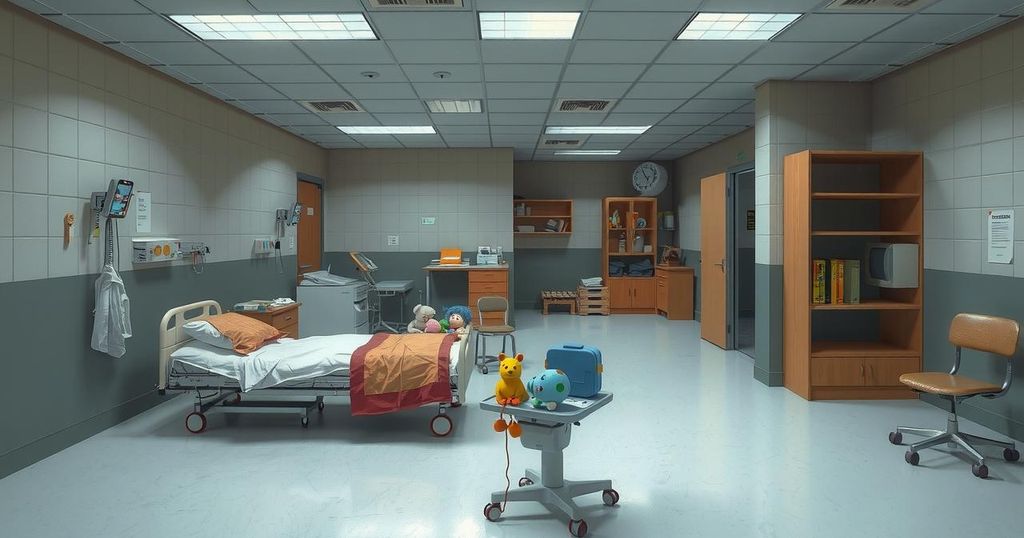Malnutrition Crisis in Afghanistan: Children at High Risk Without US Aid
Malnutrition treatment centers in Afghanistan face critical challenges due to US aid cuts, risking the lives of malnourished children. The cessation of funding has led to clinic closures, staff layoffs, and increased mortality risks. Millions are affected, with a significant impact on women in the workforce. Organizations are seeking new funding, though uncertainties remain regarding future support.
In Kabul, Afghanistan, a malnutrition treatment center is experiencing dire consequences due to the cessation of US aid. Once fully supported by American funding, this clinic can no longer operate after the United States imposed a freeze on foreign assistance, prompting health staff layoffs and the inability to admit new patients. Cobi Rietveld, the country director for Action Against Hunger, expressed alarm, stating that without treatment, these malnourished children face a “extreme high risk of dying.”
The breakdown of services has led to the closure of facilities and critical medication shortages. Chief doctor Farid Ahmad Barakzai explained the distressing situation staff face as they redirect patients seeking care to centers lacking necessary resources. Since March, the clinic has had to lock its pharmacy and store away its supplies. According to the UN, Afghanistan currently grapples with the world’s second-largest humanitarian crisis, trailing only Sudan.
With a staggering 3.5 million children under five suffering from acute malnutrition, solutions are urgently required to address this escalating public health disaster. Rietveld noted the physical risks faced by malnourished children, explaining that infections pose a greater threat, significantly increasing mortality risk. The staff’s emotional toll of these changes is palpable, as they can provide only limited care amidst growing needs.
Beyond children, the prevailing crisis impacts adults as well, with 15 million Afghans experiencing food insecurity. Edwin Ceniza Salvador from the World Health Organization lamented the historical shocks that have crippled Afghanistan’s healthcare infrastructure, leaving the most vulnerable populations, including women facing workplace restrictions, even more susceptible to dire circumstances.
The aid cuts have forced Action Against Hunger to reduce its workforce, resulting in the layoff of approximately 150 staff, most significantly affecting women who comprised about 40 members of the nutrition center’s team. The loss of employment opportunities toward a population already constrained by Taliban restrictions highlights pervasive gender inequalities.
To mitigate the financial shortfall after losing 30 percent of its budget, ACF is actively seeking proposals and discussing potential funding options with other donors. Nonetheless, Rietveld remains skeptical about replacing the lost US support, indicating severe challenges ahead for the organization and the vulnerable populations it serves.
The situation for malnourished children in Afghanistan is critical, with US aid cuts leading to heightened mortality risks among the most vulnerable. The closure of treatment centers exacerbates a humanitarian crisis affecting millions, including significant layoffs that have disproportionately impacted women. Recovery efforts are underway, but overcoming the financial gap left by US funding poses a daunting challenge for organizations like Action Against Hunger, highlighting the urgent need for renewed support and intervention.
Original Source: www.rfi.fr




Post Comment